| 1 | Manchurian black ratsnake |
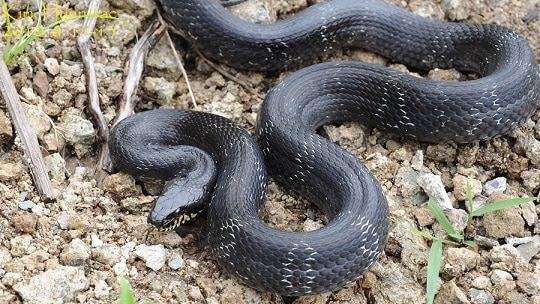
The Elaphe ratsnake genus has 18 members across Europe, all of which are non-venomous. This is a group of semi-constrictors which apply loose coils to their prey, but sometimes force them down through manual grappling instead. The darkest member is probably the Manchurian black ratsnake (Elaphe schrenkii), a species of far eastern Asia.
This member measures 140-180cm, with a maximum of 250cm, and inhabits a large area of land, including far eastern Russia, southern China, and the Korean peninsula. Like every member on this list, they pose little threat to humans, and tend to prowl the countryside at a steady pace rather than zooming around.
Manchurian black ratsnakes prey on mammals such as mice, and birds such as Eurasian tree sparrows. They’re also fond of birds’ eggs, as in captivity, they happily swallow quail eggs. They have flexible habitats, as Elaphe schrenkii are commonly found on the edges of streams near forests, but also manmade areas such as near farm buildings or agricultural fields. This species regularly mingles with humans, even laying their eggs in gaps in concrete structures and asphalt.
Manchurian black ratsnakes are known for eating like a pig in captivity. Keepers love this snake, regarding it as curious and inquisitive, rather than hiding in a corner, although they do flee sometimes when you first enter a room. This species is diurnal rather than nocturnal, making them easy to encounter.
| 2 | Four-lined snake |
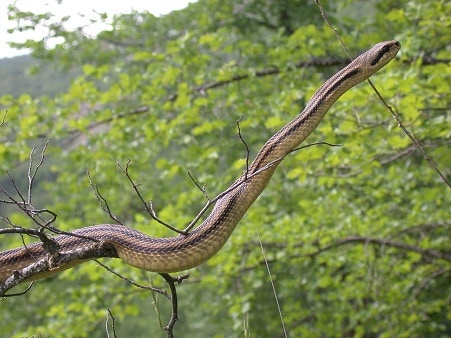
The westernmost member of the Elaphe ratsnake genus. Four-lined snakes (Elaphe quatuorlineata) are most abundant in Italy, inhabiting the lower two thirds, where they inhabit rocky open areas, borders of forests, sparse woods such as oak woods, and crumbling, abandoned buildings. Their easternmost point lies in southeast Greece, and eastern Bulgaria, and they inhabit all the Balkan countries inbetween (Albania, Macedonia, etc).
This species does have 4 black lines, two on each flank, while its spine is a consistent brown colour. On each side, a stripe connects to the eye. Bizarre folklore surrounds this snake, such as a tendency to coil around cows’ legs in order to immobilise them, before squeezing their udder to extract and drink the milk.
Four-lined snakes defend against predators by constricting their necks, even if they have no intention of actually eating them. Pet cats are one of their mortal foes, as is the least weasel, one of the smallest mammal carnivores in Europe. Their own diet consists of 77% mammals and 23% birds, according to a 1997 study, which is fairly standard stuff for the Elaphe ratsnake genus.
At a maximum of 250cm, the four-lined snake is Europe’s longest snake species when judging by record length.
| 3 | Hodgson’s ratsnake |
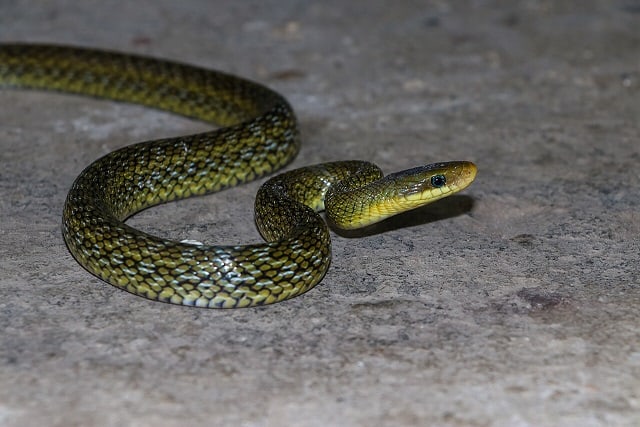
A mountainous ratsnake with barely any research. Hodgson’s ratsnake (Elaphe hodgsoni) is found along the southern borders of the Himalaya, in a long, thin territory covering Nepal and extreme northern India. This species is typically olive brown, but also greenish occasionally, with hints of bright blue or black skin visible between its scales.
This is a high altitude ratsnake, which has never been found below 1500 metres. Juveniles have black crossbands, which eventually fade into more monolithic colours as an adult. At a maximum of 150cm, Hodgson’s ratsnake is medium-sized for the group.
This species is especially poorly researched, with just scraps of information to form a picture with. A captive report found that it happily ate mice, similarly to its ratsnake kin, before refusing all food from October to April. They’re confirmed prey for other snakes, namely the Caspian cobra, which they overlap with in northern India.
Hodgson’s ratsnake moves by day, and is sometimes spotted on rural farm roads. Like other Elaphe members, they’re no threat to humans, and will normally flee if flustered. They’re excellent climbers, skillfully weaving their way up tree trunks, though they’re not a fully arboreal snake. As for its diet in the wild, and precisely which species dominate, we have no idea. Hodgson’s ratsnake is just another Himalayan mystery.
| 4 | Japanese four-lined ratsnake |
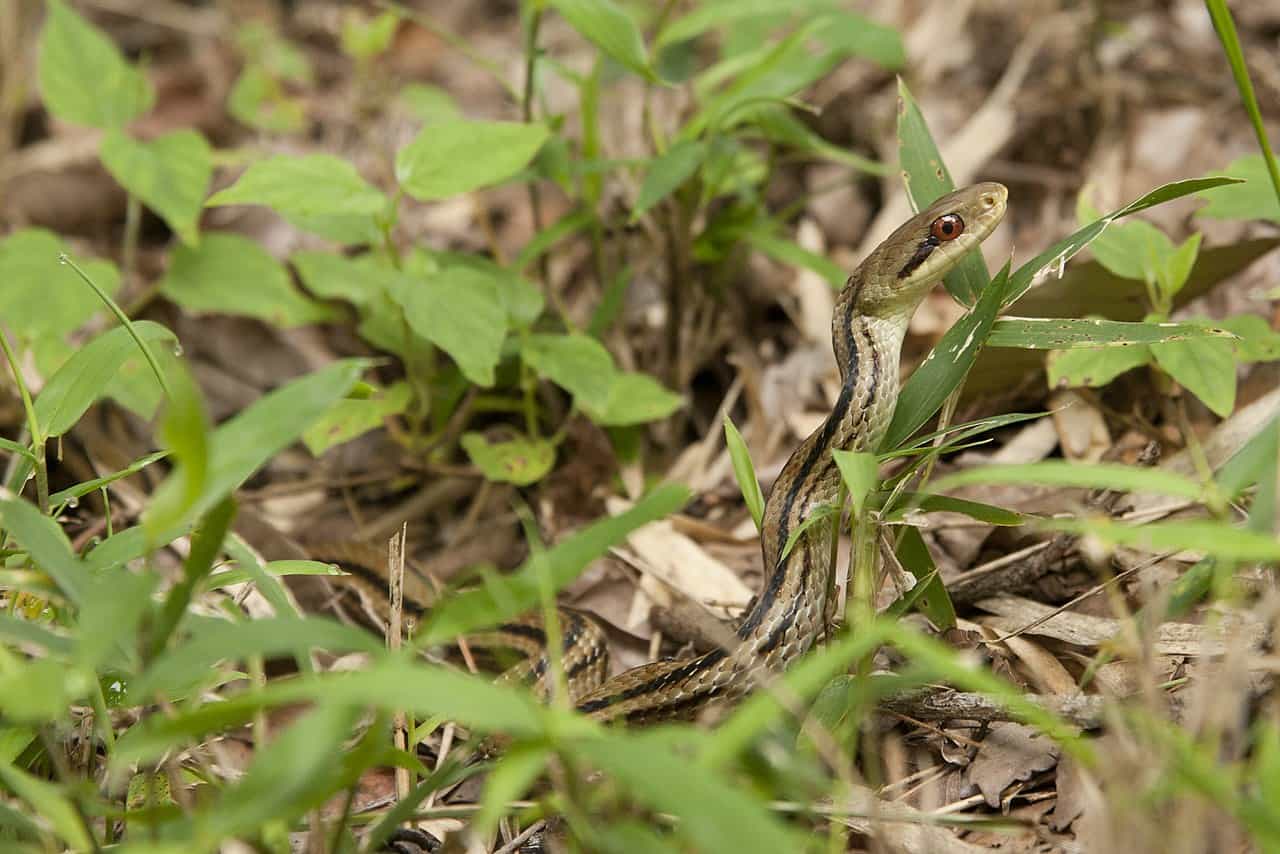
One of two Elaphe ratsnakes found on Japan, with the other simply being the Japanese ratsnake (Elaphe climacophora). These two species are the easternmost members, with the four-lined snake of Italy being the westernmost member.
The Japanese four-lined ratsnake (Elaphe quadrivirgata) inhabits both major islands, Honshu and Hokkaido, plus several offshore islands such as Mikurajima and Mijake. They average at 80-100cm, making them relatively small, but can grow massively larger on some islands, reaching a record of 200cm.
Japanese four-lined snakes vary in colour, as some are steel grey, others nearly white, and a few fully black (melanistic). There’s also a yellow morph with almost red eyes. This species has similar patterns to Italy’s four-lined snake, yet the two are separated by nearly 10,000km. Within Japan, the namesake thin lines easily separate it from the more common Japanese ratsnake, which is one of the plainest species.
Elaphe quadrivirgata mainly sticks to the ground, and likes to hang out near small streams, on the edges of rice fields or forests. They prefer amphibians, but have a highly flexible diet. On Yukushima island, they overwhelmingly ate the Okada’s five-lined skink, while on the mainland, they ate 96.6% frogs and toads. Other confirmed prey include Montane brown frogs, Kajika frogs, Japanese field frogs, and the occasional mammal like the Japanese field mouse. This species is more reliant on frogs, whereas the neighbouring Japanese ratsnake has evolved to be an expert bird egg predator.
| 5 | Flower snake |
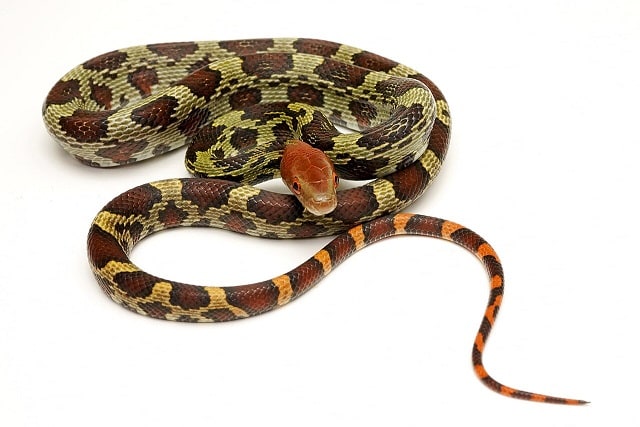
The most finely patterned of the Elaphe ratsnake genus, and therefore the most obsessively sought after by reptile collectors. Flower snakes (Elaphe moellendorffi) have a reddish head, sharply contrasting grey and dark red patterns, followed by a far brighter red for its tail. They’re easily one of the more memorable ratsnake species, with an alternative name being “red-headed ratsnake”. At a maximum of 250cm, they’re one of the longest too.
Flower snakes inhabit two countries: far northern Vietnam and southern China. Their range overlaps with the beauty ratsnake, but not with the Manchurian black ratsnake, which lives further northeast. Flower snakes can be found in forests, and even caves. In captivity, they happily swallow mice and rats, yet somehow, this species is far more fragile to keep compared to other ratsnakes. Of the thousands exported from the Chinese countryside, only a tiny fraction survive.
Flower snakes are also exploited for traditional Chinese medicine. The snakes are dried, rolled into a disc shape with the head placed in the centre, held in place with bamboo sticks, and dried over a roaring charcoal fire. You now have a dry snake disc, with a slightly fishy and salty taste. This remedy is widely believed to strengthen the waist and knees, and combat convulsions. Combined with the pet trade, this craze has sent the flower snake’s wild populations into freefall.
| 6 | Beauty ratsnake |
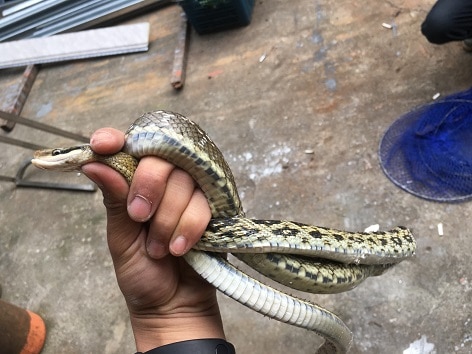
An extremely widespread species, which reaches the furthest south of all 18 Elaphe ratsnakes. Beauty ratsnakes are non-venomous, yet extremely vicious if backed into a corner, or even worse, picked up in your bare hands.
Beauty ratsnakes are quite possibly the largest of all Elaphe ratsnakes, with a known maximum of 270cm. They love to hang out in villages and amid farm buildings, searching for rats and mice, their main prey. They also slither directly up stone walls and live in roofs. But their most unique tendency is living in caves. There’s an entire subspecies called the Ridley’s cave racer (Elaphe taeniura ridleyi), which is ghostly white and found in cool, dripping caverns all over southeast Asia, preying heavily on bats.
Beauty ratsnakes range from northeast China, through Thailand, Vietnam and Cambodia, and deep into the heart of Malaysia. Chinese people call them the cauliflower snake, and turn their skin into luxury handbags. Beauty ratsnakes have vibrant, vividly contrasting blotches, which tend to coalesce into neater stripes as the tail approaches.
The beauty ratsnake can swallow 200 mice over the course of a year, and eat 3-5 in one meal. They’re extremely easy to feed in captivity, eating mice every 5-6 days. Supposedly, they can constrict a mouse’s head so hard that its nose starts bleeding.
| 7 | Blotched ratsnake |

The second most westerly Elaphe ratsnake species, after the four-lined snake of Italy. The blotched ratsnake (Elaphe sauromates) begins in Bulgaria, continues eastwards through Romania, southern Ukraine, Turkey, and ends in Uzbekistan. This is a thick-bodied ratsnake which reaches a jumbo length of 260cm. If you find one, they’re hard to miss, but blotched ratsnakes are naturally sparse in the wild, and rarely encountered by people. Even dedicated herpers can struggle to find them after scouring the Bulgarian countryside for several days.
Blotched ratsnakes prefer open areas, such as rocky steppe, semi-deserts, or rugged mountain terrain near forests. These open habitats bring them them to the attention of birds, particularly the long-legged buzzard. In Romania,, they’re becoming increasingly rare due to expanding agriculture.
According to a 2019 study, Elaphe sauromates diverged from the Italian four-lined snake an estimated 8.3-7.3 million years ago. Compared to their cousin, they have an obviously blotchier pattern, lacking the fine thin lines. Their patterns and colours stay similar from birth, undergoing no ontogenetic change. Research is lacking, but Elaphe sauromates seems to have a typical ratsnake diet, happily feeding on mice and rats in captivity.
Originally, the blotched ratsnake covered more space, but in 2019, those in eastern Turkey, Armenia and Azerbaijan were split off into a new ratsnake species: the Urartian ratsnake (Elaphe urartica). This became the 15th member of the Elaphe genus.
| 8 | Taiwan stink snake |
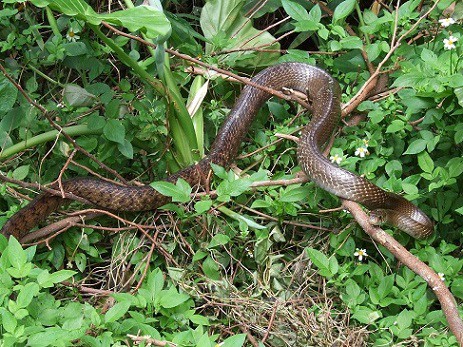
At its peak, the Elaphe ratsnake clan was much larger. All US ratsnakes were included, such as black ratsnakes and corn snakes, before being switched to the Pantherophis genus, which now has 8 members. So were the Asian green ratsnakes, which were clearly a distinct group, and are now part of the Gonyosoma genus (also 8 members).
The new, slimmed down Elaphe genus now has 18 members, and is found exclusively in Eurasia. One faithful member is the Taiwan stink snake (Elaphe carinata), or the “stinking goddess” in Chinese, which reaches a relatively large maximum of 240cm. This species inhabits a swathe of southern China and the whole of Taiwan, and is named for the especially vile smell it produces when it feels threatened. Grass snakes also produce this smell, but Elaphe carinata takes it to another level.
Taiwan stink snakes are common near the cities of Shanghai and Wuhan, reaching as far north as Beijing. This is a species of tiny beige and black speckles, which create an appearance like static TV. The proportions vary, and in some, the beige dominates the black, making this one of the paler Elaphe ratsnake species overall.
Taiwan stink snakes are a fairly aggressive species, never hesitating to bite, although they lack venom. They’re a flexible species, inhabiting shrubland and agricultural land alike. Farmers hail them for their ability to hoover up rats, and allow them to live on their land. This species has a large overlap with the twin-spotted ratsnake (see below) in eastern China.
| 9 | Blade-toothed ratsnake |
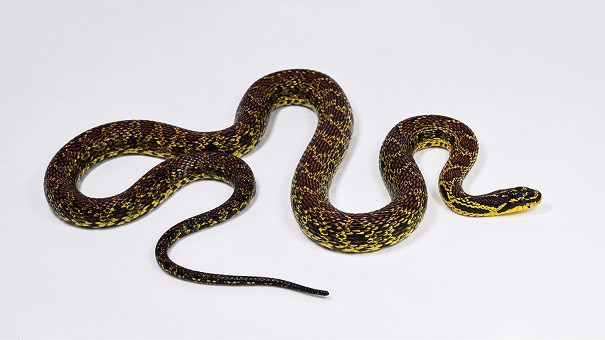
A new Elaphe ratsake species, discovered officially in 2021. The blade-toothed ratsnake (Elaphe xiphodonta) had been overlooked for decades, but was finally discovered in eastern China’s Shaanxi province. The new snake had large yellow patches on its head, with three distinct markings. It had unusually shaped teeth, with sharp cutting edges, and in captivity, it swallowed up quail eggs with great enthusiasm. The only snake they analysed contained feathers, offering more clues.
The habitats of this new snake were gently angled gravel slopes along the shores of Chang’an river, with a river width of 3 metres, at an altitude of 1700-1900 metres. It inhabited rugged terrain not far from forests, and was believed to be mimicking the nearby Jerdon’s pitviper for its own protection.
When captured, the new ratsnake triangulated its head in classic viper style. It also released a vile smell similarly to the Taiwan stink snake. Other features included a yellow belly with mottled black markings, and reddish brown blotches covering its body. The initial discovered individual measured 96.8cm, making it one of the shorter ratsnakes.
With this fresh discovery, the Elaphe ratsnake genus increased to 17 members. In 2023, the 18th member was added: the Levant ratsnake (Elaphe druzei) of northern Israel and Lebanon.
| 10 | Twin-spotted ratsnake |
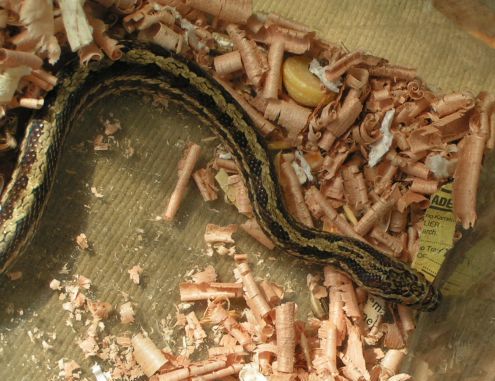
A species of eastern China, including the outskirts of Shanghai and Wuhan. This species is sandwiched roughly inbetween the territories of the flower snake and Manchurian black ratsnake. It appears in various habitats, including cultivated areas and forest edges, but is declining in the wild due to overharvesting for Chinese medicine.
This is one of the smaller Elaphe ratsnakes, at an average of just 60-80cm, and a maximum of under 1 metre. With a slender build, it looks even smaller.
Twin-spotted ratsnakes (Elaphe bimaculata) are very easy to keep in captivity, unlike the flower snake. They stay shy for several months, hiding in objects within their terrarium, before gradually growing used to their surroundings and becoming inquisitive and curious. They swallow standard pinkie mice and hopper mice with no reluctance at all, with no need for trick scenting. Dark red blotches are their classic characteristic, but these sometimes fuse to form stripes.
Like all entrants on this list, twin-spotted ratsnakes lay eggs, with a typical batch containing 3-8. However, their eggs are especially long and thin, rather than shorter and rounded. This species is most closely related to Elaphe dione, the steppe ratsnake.
